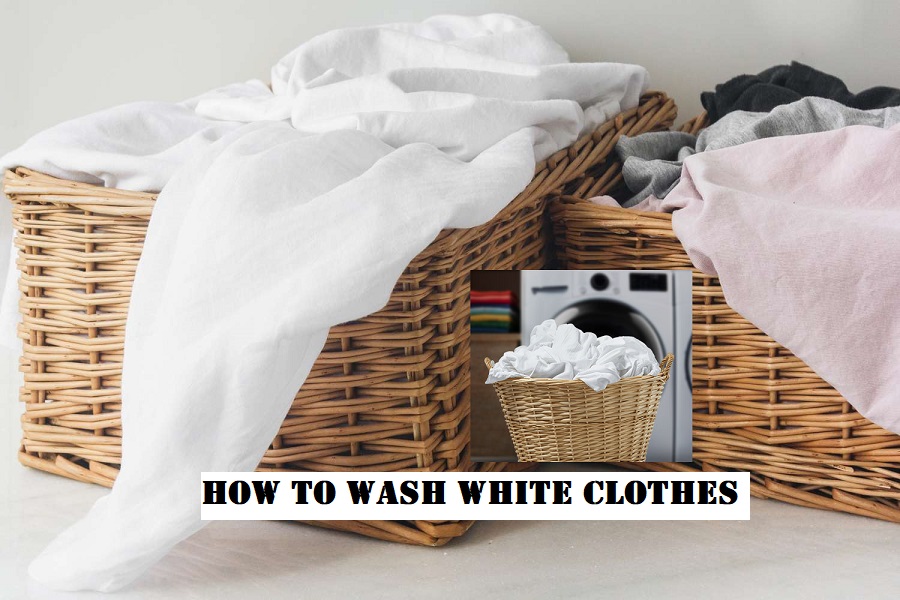To wash white clothes effectively, follow these expert tips:
-
Sorting and Separating
-
- Wash whites separately from other garments to prevent color transfer.
- Sort whites by fabric type and washing temperature for optimal cleaning results.
- Use hot water and a detergent with bleach alternative for white loads.
-
Treating Stains
-
- Pre-treat stains promptly with liquid detergent, dishwashing liquid, or shampoo.
- For colored stains, apply undiluted liquid oxygen bleach before laundering.
-
Maintaining Whiteness
-
- Store dry white clothes properly to prevent mildew.
- Remove stains promptly to avoid setting them.
- Wash white clothes in cold water to prevent aging textiles faster.
-
Additional Tips
-
- Avoid mixing whites with colored garments to prevent dye transfer.
- Use the right amount of detergent to avoid residue and dinginess.
- Consider using natural deodorizers like white vinegar to soften clothes
Common Mistakes to Avoid When Washing White Clothes
When washing white clothes, it’s crucial to avoid common mistakes to maintain their brightness and quality.
1. Overloading the Washing Machine
Overloading can lead to ineffective washing, leaving clothes dingy and not thoroughly cleaned.
2. Neglecting to Sort Clothes
Sorting by color is essential to prevent color bleeding and fading, ensuring whites stay bright and free from discoloration.
3. Using Too Much Detergent
Excessive detergent can leave residue on fabrics, causing dullness, stiffness, and potential skin irritation. Follow recommended dosages for optimal results.
4. Forgetting Stain Pre-treatment
Properly treating stains before washing is crucial to prevent them from setting into the fabric and becoming harder to remove later on.
5. Over-drying Clothes
Overdrying can lead to shrinkage, fading, and increased wear, so it’s important to avoid this by using lower heat settings or air-drying delicate items.
Guideline for Beginners to Wash White Clothes
- Sorting
Wash all whites separately from other colors to prevent color transfer and maintain the brightness of white garments. Sort by color and soil level to ensure effective cleaning results.
- Stain Removal
Identify stains and treat them promptly before washing to prevent them from setting. Use prewash stain removers, liquid laundry detergent, or a paste made from powdered laundry detergent and water for effective stain removal.
- Detergent Selection
Choose a laundry detergent with optical brighteners to make white clothes appear whiter. Consider using liquid detergents for treating stains and powder detergents for enhancing brightness.
- Water Temperature
Use warm or hot water for sturdy fabrics and cold water for delicate fabrics and protein-based stains. Hot water can effectively remove stains but may set certain types, so choose the temperature based on fabric type and stain.
- Bleaching
Use bleach sparingly to keep white clothes bright, diluting it in water before adding clothes to prevent damage. Oxygen bleach is gentler and suitable for most white fabrics, while chlorine bleach should be used cautiously due to its strength.
Tips for Drying White Clothes to Prevent Them from Fading
- Sun Drying
Hang white clothes in the sun to benefit from the sun’s ultraviolet light, which can help brighten and whiten garments naturally. Ensure even exposure to sunlight and turn the clothes over if laid flat to prevent uneven fading.
- Machine Drying
When using a dryer, set it to low-heat and delicate settings to prevent excessive heat that can cause fading and discoloration. Remove white clothes from the dryer while they are still slightly damp to prevent over-drying and potential yellowing.
- Air Drying
After machine drying, consider air drying white clothes by hanging them or laying them flat to finish the drying process gently. This method helps prevent final discoloration and saves energy compared to using a dryer.

